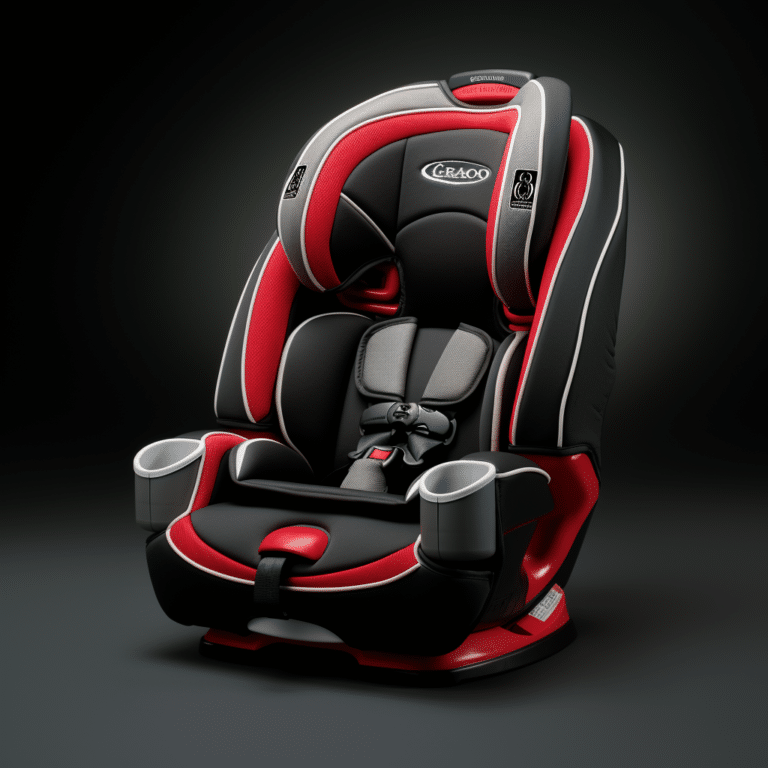Exploring Childbirth Options: Making Informed Decisions for Parents
Understanding Different Childbirth Options: Childbirth has many options for expectant parents. From a hospital to home and birthing centers, it can be confusing. Each has its own benefits and considerations. It’s important to look into all the choices.
Hospitals are managed by doctors and nurses. Intervention is available if needed. But, parents may feel the environment is too medicalized.
Home births are more private and comfortable. Families may prefer this option to have control and avoid medical intervention. But, it is not suitable for high-risk pregnancies or medical conditions.
Birthing centers provide personalized care, with midwives. Natural childbirth is promoted, and medical equipment is present for emergencies.
Tip: Parents should talk to their healthcare provider about their preferences in pregnancy. This helps them make an informed decision on the best childbirth option.

Understanding Different Childbirth Options
Understanding the Various Options Available for Childbirth
When it comes to childbirth, there are several different options available to expectant parents. These options vary in terms of setting, medical interventions and support systems. It is important to understand these options.
Benefits and drawbacks in order to make an informed decision for the birthing experience
- Hospital Birth: The most common childbirth option is giving birth in a hospital setting. This option offers access to medical interventions, such as pain management and emergency care, and is the preferred choice for women with high-risk pregnancies.
- Birthing Center: A birthing center provides a middle ground between a hospital birth and a home birth. These centers are designed to provide a more home-like environment while still offering medical support. They often have midwives who specialize in natural childbirth and provide a range of pain management options.
- Home Birth: Giving birth at home is an option for women with low-risk pregnancies who desire a more intimate and familiar setting. Home births are typically attended by certified midwives and offer a personalized and holistic approach to childbirth.
- Water Birth: Water birth is a method that involves laboring and giving birth in a warm birthing pool. This option provides pain relief, relaxation, and buoyancy, which can make the birthing process easier for some women. It may take place in a hospital, birthing center, or at home.
- Hypnobirthing: Hypnobirthing is a technique that combines self-hypnosis, relaxation, and breathing techniques to achieve a calm and virtually pain-free childbirth. It emphasizes the power of the mind and aims to reduce anxiety and fear associated with labor.
Understanding Different Childbirth Options
Is crucial for expectant parents to make informed decisions about their birthing experience. Each option has its own unique advantages and considerations that should be carefully weighed. It is recommended to discuss these options with a healthcare provider to determine which one aligns best with individual needs and preferences.
A unique and interesting fact about childbirth is that according to a study published in the journal Birth, the usage of birthing pools during labor can significantly reduce the need for epidurals or other pain medication.
If you think going to the Understanding Different Childbirth Options hospital for childbirth is a bit extreme, just remember, at least you won’t have to worry about cleaning up the mess at home.
Hospital Birth
Once upon a time, Sarah anxiously awaited the birth of her first child in a hospital delivery room. Nurses bustled around her, providing constant monitoring and assistance. A skilled doctor guided her through each step, ensuring a smooth experience.
Hospitals offer various medical support benefits, such as immediate access to doctors, nurses and other medical staff. Furthermore, they have multiple delivery rooms with necessary medical equipment. Pain relief options, such as epidurals and intravenous medications, are available to ease discomfort during labor. There’s advanced monitoring of both mother and baby’s vital signs, and emergency care and equipment in case of unforeseen complications. Postpartum care for both mother and newborn is also provided, including breastfeeding support and newborn care education.
Sarah was thankful for the comprehensive care provided in the hospital setting.
Birth Center Birth
Birth Centers provide personalized care and support during pregnancy, labor, and post-birth. They help the process flow naturally. Midwives assist with pain management and emotional support.
The atmosphere is calming and homely, with comfortable furniture and dim lighting. Many centers offer birthing pools or tubs for water births, to reduce the intensity of contractions.
Sarah had her first child in a birth center. She was grateful for the midwives who took the time to understand her wishes. The peaceful atmosphere allowed her to have a positive experience, with no unnecessary interventions.
Home Birth
At home birth – a woman gives birth to her child in the comforts of her own home. This provides an intimate and personal experience.
Safety: Home births can be safe with trained and experienced healthcare professionals.
Comfort: Being in a familiar environment can reduce stress and promote relaxation during labor.
Support: Mothers may feel more supported and empowered having their loved ones close by.
Flexibility: Home births offer flexibility for birthing positions, birthing pool, and other preferences.
Fact: ACOG states lower rates of intervention with planned home births and certified midwives.
Pros and Cons of Each Option
Pros and Cons of Each Option:
Childbirth options vary, with each option presenting unique benefits and drawbacks. An objective evaluation of these options enables expectant mothers to make informed decisions that align with their specific needs and preferences.
In order to provide a comprehensive assessment of the pros and cons of each option, we have created a table to present and compare the different aspects. This table aims to help expectant mothers understand the various factors they need to consider when making their childbirth choices.
Table: Pros and Cons of Each Option
| Option | Pros | Cons |
|---|---|---|
| 1. Natural childbirth | – Empowering experience – Faster recovery time – Lower risk of medical interventions | – Increased pain during labor – Unpredictable duration – Limited pain management options |
| 2. Medication-assisted childbirth | – Pain relief options available | – Potential complications and side effects – Longer recovery time – Limited control over labor process |
| 3. Cesarean section | – Controlled environment – Reduced risk during complicated pregnancies | – Longer recovery time – Increased risk of infection – Limited ability to bond with the baby immediately |
It’s important to note that these are not the only options available, and each woman’s situation may require a different approach. It is crucial to consult with healthcare professionals to evaluate the suitability of each option based on individual circumstances.
While the table provides a comprehensive overview, it’s essential to consider other factors as well. These may include personal beliefs, medical history, and preferences of the expectant mother. Making an informed decision requires a thoughtful consideration of individual circumstances and open communication with healthcare providers.
As an example, Sarah, a first-time mother, opted for a natural childbirth after thorough research and discussions with her medical team. Despite experiencing intense pain during labor, she found the overall experience empowering and was able to recover relatively faster than anticipated. Sarah’s decision aligns with her desire for a medication-free birth and a desire to have full control over the labor process.
The doctor may not deliver your baby on a silver platter, but at least you’ll be surrounded by all the hospital drama you can handle.
Hospital Birth
When it comes to childbirth, hospitals stand out! There are lots of advantages and disadvantages to consider.
Medical expertise: With a hospital birth, you have access to doctors who can watch the mum and baby throughout labor. If something goes wrong, medical help is close at hand.
Emergency care: Hospitals are ready for any emergency during delivery. Both mum and baby will get quick medical attention if needed.
Support services: You get many services like pain management, breastfeeding help and postpartum care. These resources can help mums with birth and early motherhood.
Plus, in hospitals, healthcare providers follow set protocols for safe delivery. Advanced technology and medical interventions also add an extra layer of safety.
Hospital births grew more popular in the early 1900s, as medical knowledge and tech improved. This led to better maternal outcomes and lower infant mortality rates than home births. People still trust hospitals for childbirth due to their expertise, resources and emergency care.
Birth Center Birth
Birth centers offer a unique, intimate and natural setting for childbirth compared to hospitals. Trained midwives provide personalized care throughout labor and delivery in this supportive environment. The special features of birth center births include:
- 1. Tailored care to individual mothers.
- 2. A cozy atmosphere for labor.
- 3. Freedom to move, use different birthing positions and pain relief options.
- 4. Allowing partners, family members, or support persons during the process.
- 5. Low-intervention births, focusing on natural pain management.
- 6. Postpartum care for smooth transition into motherhood.
It’s essential to consider potential risks or complications with healthcare providers before choosing birth centers. Emma D. experienced an empowering birth at her local center, appreciating the personalized care and relaxed atmosphere her midwife provided. This positive experience is what birth centers aim to achieve – offering expectant mothers an alternative setting that emphasizes comfort, freedom of choice, and a natural approach.
Home Birth
A comparison of home vs hospital births can be informative.
At home:
- familiar
- limited pain relief options
- natural approach
- more personal care
- typically less expensive
In hospital:
- clinical environment
- wide range of pain relief methods
- potential medical interventions
- access to various healthcare providers
- cost depends on insurance
Plus, midwives often present at home births to provide continuous support and empower the woman in labour.
Pro Tip: Check access to emergency services & talk through plans with a healthcare pro before deciding on a home birth.
Preparing for Your Chosen Childbirth Option
Preparing for Your Chosen Childbirth Option
Explore various childbirth options and their preparation guidelines to ensure a smooth delivery experience.
- Understand the requirements of your chosen childbirth option, whether it is a natural birth, cesarean section, water birth, or home birth.
- Consult with your healthcare provider and discuss the necessary preparations specific to your chosen childbirth option.
- Attend childbirth education classes to gain knowledge about the process and techniques that are crucial for your chosen option.
- Create a birth plan that outlines your preferences, including pain management, labor positions, and any special requests.
To fully prepare for your chosen childbirth option, consider your physical and emotional well-being while carefully following the guidelines provided by your healthcare provider.
Additionally, practicing relaxation techniques, establishing a support network, and maintaining a healthy lifestyle can contribute to a positive childbirth experience.
True Fact: According to the American Pregnancy Association, approximately 33% of births in the United States are delivered by cesarean section.
Hospital Birth: Where you can experience the miracle of life while simultaneously contemplating the existence of painkillers.
Hospital Birth
Opting for a hospital birth ensures there are medical professionals and advanced equipment close by during labor. It also gives a sense of security and emergency support if needed.
Hospitals provide pain management options such as epidurals and nitrous oxide to help manage labor discomfort. Trained nurses and doctors are also there to constantly monitor both you and your baby’s wellbeing.
If any complications arise during childbirth, Understanding Different Childbirth Options hospitals also provide access to specialized care. Neonatal intensive care units are available to give immediate medical attention to newborns who may require extra support.
Pro Tip: Familiarize yourself with the hospital’s policies and procedures before the birth. This will help make sure you feel confident and informed when deciding your birth plan.
Birth Center Birth
A Birth Center Birth is when expectant mothers receive care from midwives who specialize in low-risk pregnancies and natural childbirth. They provide continuous support, ensuring the mother feels safe. The aim is to promote the normal physiological process of childbirth. Midwives help with movement, position changes, and relaxation techniques. They also offer non-pharmacological methods for pain relief.
To make the most of your Birth Center Birth experience, you must choose a reputable birth center with experienced midwives. Research different options, read reviews, and ask around. You should also attend prenatal classes specifically designed for this type of childbirth. These classes cover topics like natural pain management techniques, breastfeeding support, newborn care, and postpartum recovery.
It is also wise to create a birth plan with your midwife. This plan outlines your preferences for labor positions, pain management methods, interventions (if necessary), and immediate newborn care. Discussing these preferences means everyone involved in your birth knows what you want.
In summary, a Birth Center Birth offers expectant parents an alternative birthing option that emphasizes personalization and promotes the natural progression of childbirth. By preparing properly, you can have a positive and empowering birth experience.
Home Birth
Personalized Environment: Home Birth offers a familiar and cozy setting. It allows moms to create their own birthing atmosphere.
Plus, it provides more privacy. This can help moms to feel more relaxed during labor.
Greater Autonomy: Home Birth gives women more control over their delivery. They can make decisions regarding their labor and delivery.
Midwives offer continuous care and individualized support. This can help to make the birthing experience even more positive.
It’s important to note, home birth requires careful planning. If needed, moms should have access to emergency medical services. For low-risk pregnancies, home birth can be a safe and satisfying option for many mothers.
In the past, home births were common before hospitals became popular in the 20th century. Midwives played a key role in helping with childbirth.
But then, hospitals took off due to perceived safety advantages. Now, there is growing interest in home births as an alternative choice for moms looking for a natural birthing experience.
Common Myths and Misconceptions
Myths and misconceptions about childbirth can cause confusion and fear. Let’s dive deeper and explore the real truth behind some popular beliefs. Here’s a comparison of a few myths and realities:
- Natural birth is safer? Not necessarily, both natural and medical interventions have their own risks.
- Cesarean an easy way out? No, it’s a major surgery that comes with its own risks.
- Pain relief affects the baby? No, modern methods like epidurals are administered safely and benefit both mom and baby.
- Home births dangerous? Not always. Skilled midwives and appropriate planning can make them safe for low-risk pregnancies.
- Induced labor unnatural? No, sometimes it’s necessary to protect mom and baby’s health.
When it comes to childbirth, decisions should be based on facts. Pregnant people should consult healthcare providers for personalized guidance. Debunking myths helps promote factual understanding and allows expectant parents to make informed choices for their safety and their baby’s. Remember: pregnancy is unique, and what works for one may not work for another. Trust in medical expertise while considering personal preferences to create the best birth plan.

Conclusion
Understanding Different Childbirth Options: Childbirth options are manifold, giving ladies a range of choices. From natural to medicated births – each one has its own advantages and drawbacks. Some may favour a serene home birth, while others may feel snugger in a hospital with medical staff and modern technology.
When selecting a birthing option, ponder all possibilities. Water births provide a gentle and calming atmosphere to give birth in warm water. It is believed to reduce pain and promote relaxation.
Vaginal birth after Cesarean (VBAC) is another selection for women who previously had a C-section. With right supervision and assistance, numerous women have successfully delivered vaginally. VBAC enables women to have a vaginal birth, while avoiding the risks of repetitive C-sections.
Additionally, medication during childbirth can provide relief. Epidurals are normally used to numb the lower body, making childbirth more controllable. Consider the advantages and side effects before opting for this option.
Don’t skip researching the available Understanding Different Childbirth Options childbirth options! Take your time to study, consult with your healthcare provider, and settle on what suits you. Every woman has a different birthing experience. Select the correct option to feel content and guarantee the best start for your little one. Embrace motherhood with assurance!
Frequently Asked Questions
Q: What are the different childbirth options?
A: There are several childbirth options available, including:
- Hospital Birth: This is the most common option, where the mother gives birth in a hospital setting, usually with the assistance of medical professionals.
- Home Birth: Some parents choose to give birth at home, with the help of a certified midwife or doula. This option provides a more intimate and relaxed setting.
- Water Birth: Water birth involves giving birth in a birthing pool or tub, which can provide pain relief and a calming environment for the mother.
- Birthing Center: Birthing centers offer a home-like setting for childbirth, usually with midwives or nurse-midwives attending to the mother’s needs.
- Cesarean Section: A c-section is a surgical procedure in which the baby is delivered through an incision in the mother’s abdomen and uterus. This option is necessary in certain medical situations.
- Vaginal Birth After Cesarean (VBAC): Some women who have previously had a c-section may be eligible for a VBAC, where they deliver their baby vaginally in a subsequent pregnancy.
Q: Is it safe to have a home birth?
A: Home birth can be a safe option for women with low-risk pregnancies, as long as they are attended by a Understanding Different Childbirth Options certified midwife or doula who can provide appropriate medical care and emergency interventions if needed. However, it’s important to discuss the risks and benefits with a healthcare provider before making a decision.
Q: What are the benefits of water birth?
A: Water birth is believed to provide pain relief, promote relaxation, and create a gentle transition for the baby from the womb to the outside world. The buoyancy of the water can help ease the pressure on the mother’s body and facilitate a more comfortable birth experience.
Q: Can I opt for a vaginal birth after having a previous cesarean section?
A: Many women who have had a previous c-section can have a vaginal birth in subsequent pregnancies, depending on their individual Understanding Different Childbirth Options circumstances. It’s important to consult with a healthcare provider to evaluate the risks and determine if a vaginal birth after cesarean (VBAC) is a suitable option for you.
Q: What happens during a cesarean section?
A: During a c-section, an incision is made in the mother’s abdomen and uterus to deliver the baby. The procedure is usually performed under regional anesthesia, such as an epidural or spinal block, to numb the lower part of the body. The mother will be conscious during the surgery, and the healthcare team will monitor her and the baby closely.
Q: Are midwives available only in birthing centers?
A: No, midwives can be available in various settings, including hospitals, birthing centers, and even for home births. They provide personalized care, support during labor, and often have expertise in natural childbirth techniques.






